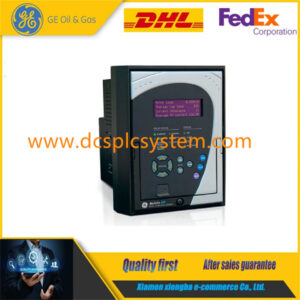Description
CI858K01 ABB Drivebus Interface
CI858K01 creates a library of routines to simplify the development of compatible FDT/FRAME applications that provide an open, integrated, single access point for networks and installed assets. Original Equipment Manufacturers (OEMs) can use these tools to develop FDT/FRAME with company-specific branding, bundling FRAME applications with DTMs and distributing them to customers as a complete turnkey solution for device parameterisation. In addition, Universal Components can be integrated with engineering applications such as Programmable Logic Controller (PLC) programming tools, Distributed Control Systems (DCS), asset management applications or any other type of software application. The Common Component Toolkit encapsulates the FDT specification. Developers can link their graphical user interfaces (GUIs) to the components through defined software interfaces, providing a familiar user experience for customers and a native look and feel for the FDT/FRAME interface in the application. The Common Components meet all the basic low-level software coding requirements for instrument manufacturers developing FDT-based smart devices. They can be used for both simple and complex devices, enabling these instruments to be integrated with FDT/FRAME-enabled systems.The FDT Common Components have been inter-tested through a series of regression tests. This ensures that FRAME and DTM products built using common components are interoperable when they arrive in the field. The use of these kits also accelerates the testing of dtm INSPECTOR certification tools through the official FDT Group certification process. FDT-enabled solutions with common components automatically green light a series of test cases that would otherwise need to be executed separately.
With cutting-edge HMI (human-machine interface) technology, high-quality displays and award-winning design, the new EXTER terminals enable machine builders and system integrators to increase their competitive advantage. The new terminals offer the market a smaller model of the popular EXTER series. They are available in touchscreen and keypad versions with display sizes ranging from 3.5 to 5.7 inches.HMI Technology Ready for the FutureDespite their size, the new terminals offer hardware and features that are ready for the future.Compatible with major industrial automation brands EXTER terminals are designed for easy integration with automation systems and devices such as PLCs, variable speed drives and motion controllers from the major brands on the market. A wide range of drivers can be downloaded from the Beijer Electronics homepage or via the configuration software Information Designer, which is used to configure EXTER operator panels. The list of drivers is continuously updated according to the needs and wishes of the market. A strong linked-list DMA engine transfers A/D data via the PCE interface using a distinctive capture gate drive mode. In this mode, knowledge of the transfer length specified by the link definition is unnecessary before data acquisition since the acquisition gate length controls it. This mode is particularly advantageous for applications where external gates are responsible for acquisition and the gate’s precise length is uncertain or liable to change. In each A/D acquisition IP module, there exists a robust DDCIP core. The flexible input routing of the A/D acquisition IP modules allows for numerous configurations, such as the possibility of having one A/D driving two DDCs or two A/DS driving their respective DDCs.










